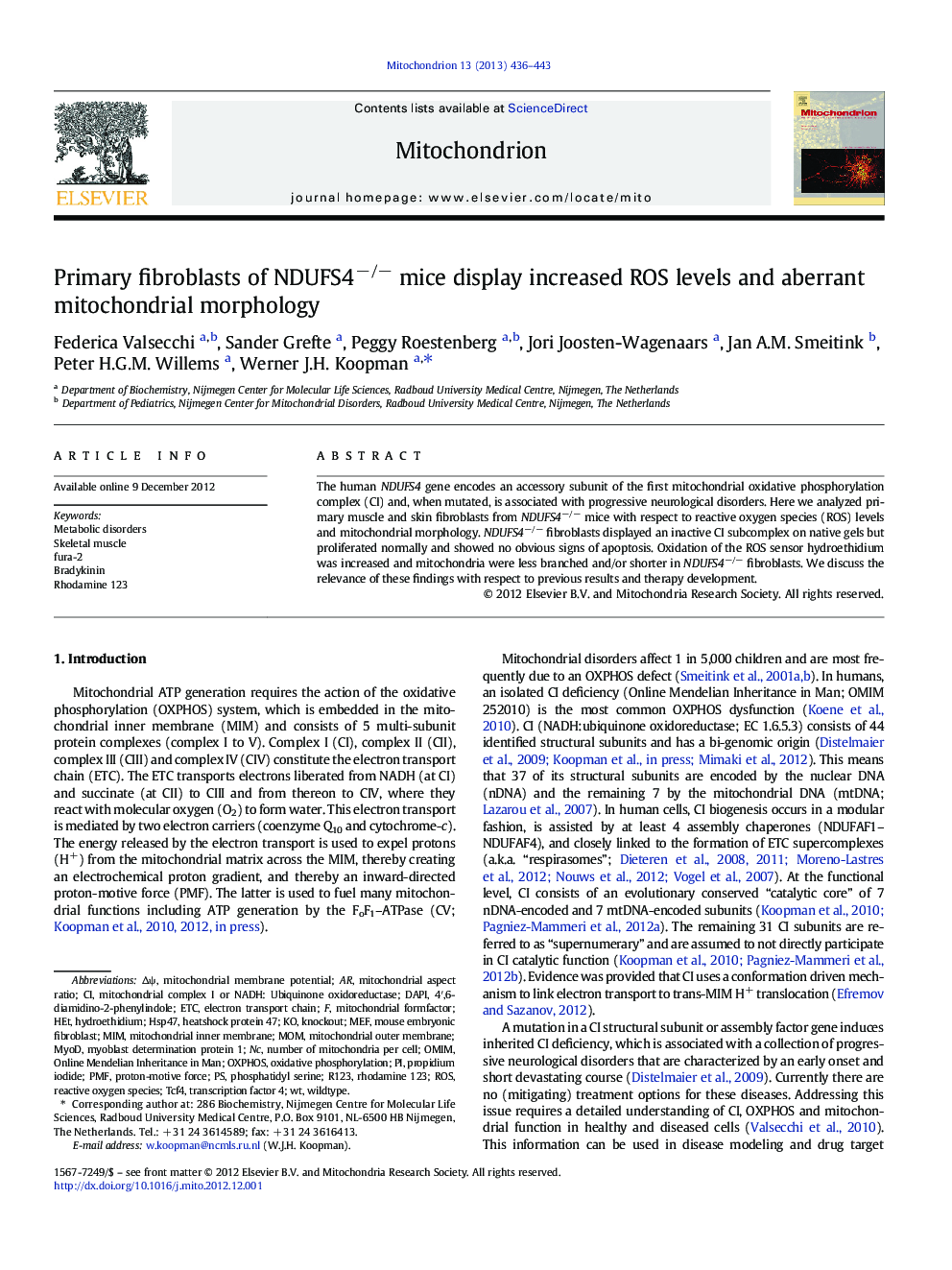| Article ID | Journal | Published Year | Pages | File Type |
|---|---|---|---|---|
| 2068749 | Mitochondrion | 2013 | 8 Pages |
Abstract
The human NDUFS4 gene encodes an accessory subunit of the first mitochondrial oxidative phosphorylation complex (CI) and, when mutated, is associated with progressive neurological disorders. Here we analyzed primary muscle and skin fibroblasts from NDUFS4−/− mice with respect to reactive oxygen species (ROS) levels and mitochondrial morphology. NDUFS4−/− fibroblasts displayed an inactive CI subcomplex on native gels but proliferated normally and showed no obvious signs of apoptosis. Oxidation of the ROS sensor hydroethidium was increased and mitochondria were less branched and/or shorter in NDUFS4−/− fibroblasts. We discuss the relevance of these findings with respect to previous results and therapy development.
Keywords
Related Topics
Life Sciences
Biochemistry, Genetics and Molecular Biology
Biophysics
Authors
Federica Valsecchi, Sander Grefte, Peggy Roestenberg, Jori Joosten-Wagenaars, Jan A.M. Smeitink, Peter H.G.M. Willems, Werner J.H. Koopman,
